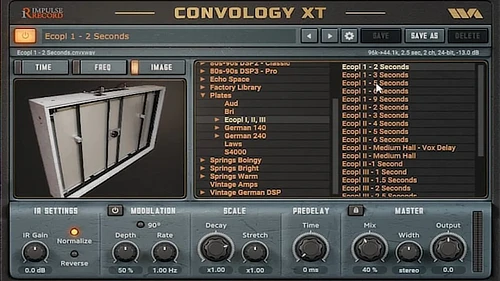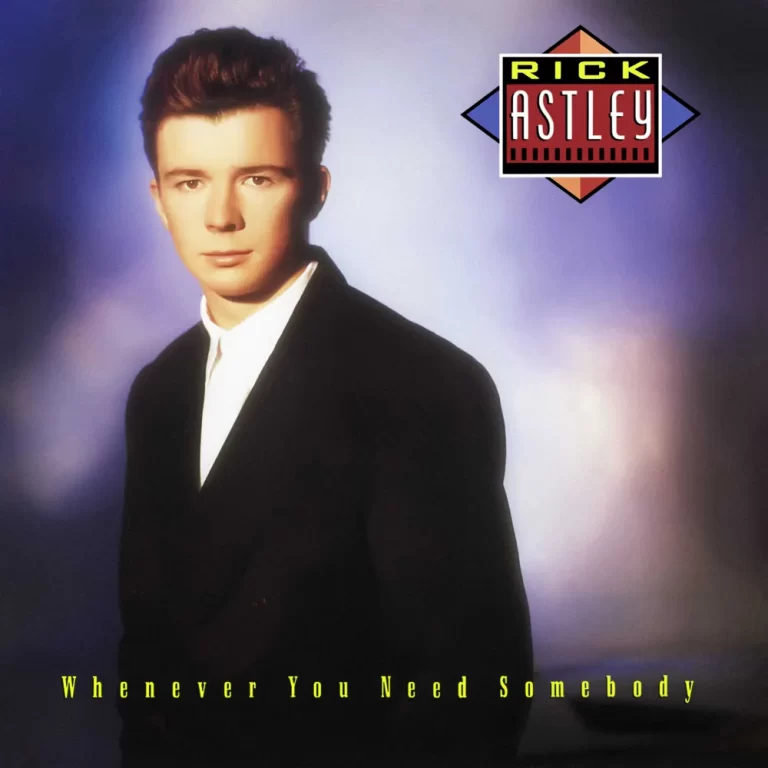Unveiled at the AES Show in 1978, the Lexicon 224 was a game-changer in the world of digital reverb. While EMT’s 250 was the first digital reverb to hit the market, it was the Lexicon 224 (along with its 224X and 224XL siblings) that went on to become the most popular and ubiquitous high-end studio reverb in history.
The Lexicon 224 was known for its spacey, extra-long decays, and was an instant hit with musicians and engineers alike. In fact, one of the earliest pioneers of the extra-long decay was Vangelis, who used the Lexicon 224 to great effect in the Blade Runner soundtrack.
![]() The story of the Lexicon 224’s development is an interesting one. Dr. David Griesinger, a nuclear physicist, musician, and classical recording engineer, had been working on a digital solution to reverb. Seeing EMT’s 250 inspired him to merge a microcomputer with his reverb design. He pitched his rough prototype to Lexicon, which bought the invention and brought Griesinger on board to help refine the product.
The story of the Lexicon 224’s development is an interesting one. Dr. David Griesinger, a nuclear physicist, musician, and classical recording engineer, had been working on a digital solution to reverb. Seeing EMT’s 250 inspired him to merge a microcomputer with his reverb design. He pitched his rough prototype to Lexicon, which bought the invention and brought Griesinger on board to help refine the product.
One of Griesinger’s key concepts for the new reverb was creating a separate control unit for parameter adjustment and program access. The Lexicon 224 reverberation system had a console-top controller with a four-rack space brain, two inputs, four outputs, and interchangeable programs to simulate chambers, plates, and rooms.
At US$7,500 with two programs or US$7,900 with four programs, the 224 was considered “affordable” for a high-end reverb.
Compared to the EMT 250, which cost twice as much, the 224 was a hit. The Lexicon 224 evolved into the improved Lexicon 224X, which used a higher sampling rate of 34.5kHz instead of the 224’s 20kHz, and then into the Lexicon 224XL, which included the LARC (Lexicon Alphanumeric Remote Control). The LARC offered fingertip access to programs and parameters, dedicated function keys, and a 24-character LED.
The Lexicon 224 used a fixed-point processor with a 16-bit word size, designed in the late 1970s using the best technology available at the time, which included the 8080 microprocessor, 12-bit converters (using the DAC80 DAC IC), input transformers, and bucket loads of 74S/LS-series logic.
While the converters themselves were 12-bit, a clever scaling circuit gave an extra 24dB of headroom by actively shifting the input gain, resulting in a 16-bit conversion range overall, though precision was still only 12-bit.
The Lexicon 224 has been used on numerous iconic records throughout the years. One of the most notable albums is the Talking Heads’ “Remain in Light,” which was released in 1980.
The album was recorded at Compass Point Studios in the Bahamas, where producer Brian Eno had installed a Lexicon 224. Eno utilised the reverb to create the album’s distinctive sonic landscapes, resulting in a sound that was far more expansive than the band’s previous efforts.
Another classic album that featured the Lexicon 224 is U2’s The Unforgettable Fire, released in 1984. Daniel Lanois, who produced the album along with Brian Eno, used the reverb to create the album’s ambient, spacious soundscapes. The reverb is particularly prominent on tracks like Pride (In the Name of Love) and the title track The Unforgettable Fire.
Pink Floyd’s The Final Cut, released in 1983, also features the Lexicon 224. The album was recorded at the band’s own studio, Britannia Row, where engineer Andy Jackson utilised the reverb to create the album’s haunting, ethereal sound.
Other notable records that used the Lexicon 224 include Peter Gabriel’s So (1986), Kate Bush’s Hounds of Love (1985), Rush’s Power Windows (1985), and countless others. Its popularity and widespread use throughout the 1980s cemented the Lexicon 224’s place in the history of digital reverbs.
The value of a Lexicon 224 today varies depending on the condition, age, and specific model. Due to its popularity and use on many classic recordings, the original 224 and its subsequent models, the 224X and 224XL, are highly sought after by collectors and studio owners alike.
Vintage Lexicon 224 units in good condition can fetch prices in the range of US$5,000 to US$10,000, while the 224X and 224XL models can go for even higher prices due to their improved specifications and additional features.
However, it’s worth noting that the Lexicon 224 is a complex and fragile piece of equipment that requires specialised knowledge to maintain and repair. As such, the cost of maintenance and repairs can also add up significantly over time.















One Response
Awesome!!! Didn’t know the 224 was available as plugin! Must Have!